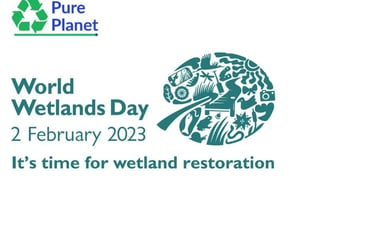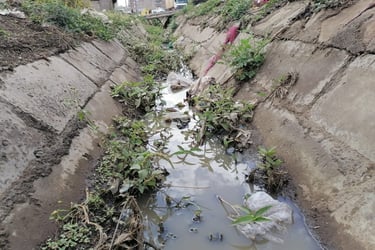IT IS TIME TO RESTORE THE WETLANDS
If African governments are to confront the threats posed by unsustainable practices, they must adapt their strategies to creating and managing their wetlands in such a way that it conserves the environment and creates resilient economies. African governments need to adapt their strategies to create and manage their wetlands sustainably to conserve the environment and create resilient economies.
Wetlands in Africa cover an area of more than 384,500 square miles, representing around 10.6 percent of the continent's total land area. Unfortunately, human activities threaten these essential habitats and are causing the wetlands of Africa to shrink, with negative long-term consequences for the continent's environment and economy. If African governments are to confront the threats posed by unsustainable practices, they must adapt their strategies to creating and managing their wetlands in such a way that it conserves the environment and creates resilient economies.
The first step for African governments should be to ensure that infrastructure and economic development projects do not harm wetlands and that wetland habitats are taken into consideration when planning and executing. This could include the introduction of environmental impact assessments, buffer zones, and permitting schemes that limit development activities in certain areas of the wetlands. Furthermore, these regulations should include provisions for the restoration of any wetlands that have been destroyed and for the payment of penalties for any activities that have direct consequences for socio-ecosystems in and around the wetlands.
Second, African governments should focus their efforts on the development of sustainable waste management systems. This could range from reducing, reusing, and recycling waste, to the construction of sewage and wastewater treatment plants that are capable of removing contaminants before releasing treated water back into the wetlands. Additionally, there should be focused efforts to reduce the current usage of plastics in the continent and investment in education and awareness initiatives that can encourage local communities to reduce, reuse and recycle waste materials.
Third, African governments should focus on restoring and maintaining their terrestrial and aquatic wetlands ecosystems. This could include introducing measures that restrict agricultural and industrial expansion, the introduction of new lands for wildlife habitats, and the preservation of existing wildlife habitats. Furthermore, they should promote the monitoring of water quality and promote the introduction of water management systems that can prevent the land from becoming waterlogged and poor water quality from polluting the wetlands. The introduction of education and awareness initiatives can also go a long way in helping local communities to understand the importance of wetlands and the need for their conservation.
Finally, African governments should focus their efforts on the establishment of wetland management plans. These plans should provide a framework for the monitoring, protection, restoration, and conservation of wetlands within their respective countries. The plans should include indicators to measure the condition of wetlands and the effects of different activities on them, as well as strategies for mitigating the impacts of human activities on wetlands.
In conclusion, African governments need to adapt their strategies to create and manage their wetlands sustainably to conserve the environment and create resilient economies. This can be achieved by introducing regulations that limit activities causing destruction to wetlands, developing sustainable waste management systems, restoring and maintaining terrestrial and aquatic wetlands ecosystems, and introducing wetland management plans. Such measures can go a long way in ensuring a prosperous future for Africa and its wetlands.




